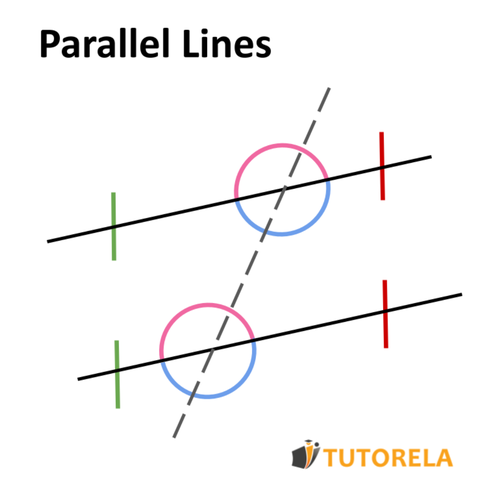Frequently Asked Questions
Everything you need to know about Angles in Parallel Lines
What are corresponding angles in parallel lines and how do I identify them?
+ Corresponding angles are angles that occupy the same relative position when a transversal cuts two parallel lines. They are on the same side of the transversal and at the same 'level' (both above or both below the parallel lines). Corresponding angles are always equal when the lines are parallel.
How do I solve problems with alternate angles in parallel lines?
+ Alternate angles are equal when formed by parallel lines and a transversal. To solve: 1) Identify the parallel lines and transversal, 2) Locate angles on opposite sides of the transversal and different levels, 3) Set up equations knowing alternate angles are equal, 4) Solve for unknown values.
What is the difference between adjacent angles and consecutive angles?
+ Adjacent angles share a vertex and are next to each other on the same straight line, always summing to 180°. Consecutive angles (also called co-interior or collateral angles) are on the same side of a transversal but at different levels between parallel lines, and they also sum to 180°.
Why do consecutive interior angles add up to 180 degrees?
+ Consecutive interior angles are supplementary because they form a linear pair when you consider the transversal as a straight line. Since parallel lines maintain consistent angle relationships, these same-side interior angles must sum to 180° to preserve the parallel property.
How can I remember the different types of angles in parallel lines?
+ Use these memory tricks: Corresponding angles are in 'corresponding' positions (same spot), Alternate angles 'alternate' sides, Adjacent angles are 'next door neighbors', Consecutive angles are 'following each other' on the same side. Practice identifying their positions relative to the transversal and parallel lines.
What are the most common mistakes when solving parallel line angle problems?
+ Common errors include: confusing corresponding with alternate angles, forgetting that consecutive angles sum to 180° (not equal), misidentifying which lines are parallel, not recognizing the transversal, and mixing up interior vs exterior angle classifications. Always draw clear diagrams and label angles systematically.
When are vertically opposite angles used in parallel line problems?
+ Vertically opposite angles appear when two lines intersect, forming four angles where opposite pairs are equal. In parallel line problems, they help you find additional angle measures at intersection points between the transversal and each parallel line, providing more angle relationships to solve complex problems.
How do I prove that two lines are parallel using angle relationships?
+ Lines are parallel if any of these conditions are met: corresponding angles are equal, alternate interior angles are equal, alternate exterior angles are equal, or consecutive interior angles sum to 180°. To prove parallelism, show that one of these angle relationships holds for the given lines and transversal.
